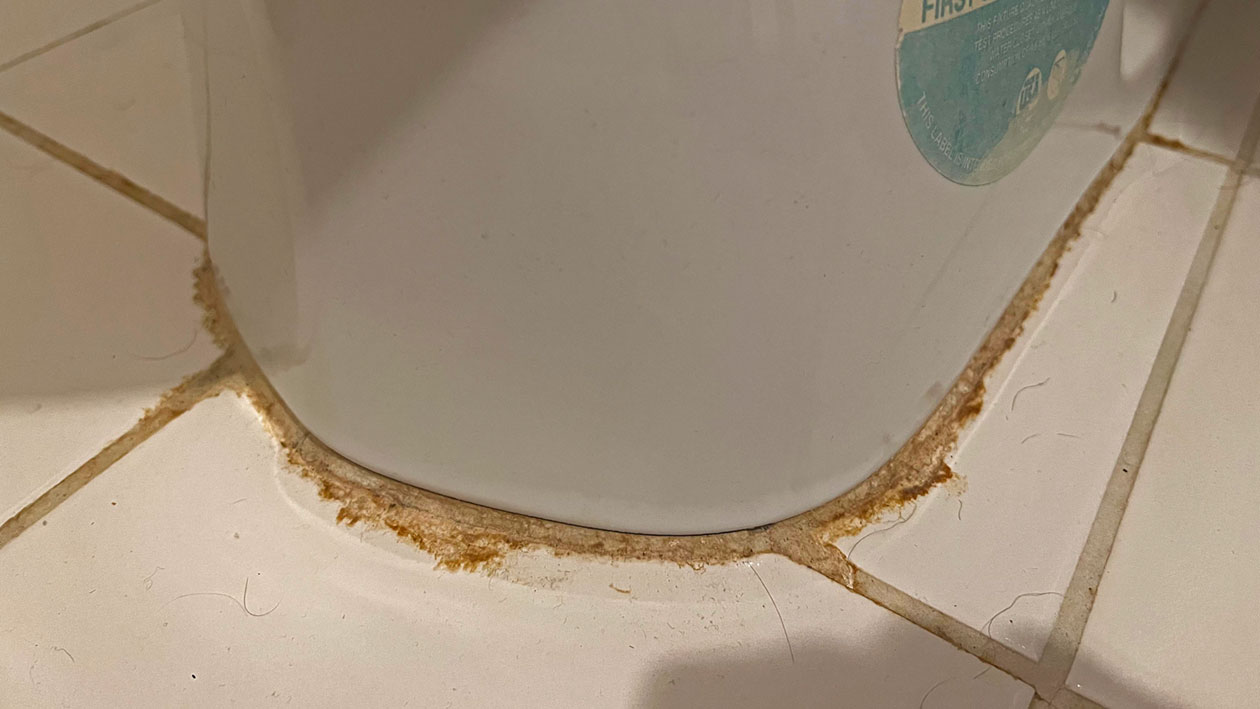You’ve noticed that annoying puddle around your toilet base again, haven’t you? Don’t worry, you’re definitely not alone in this frustrating battle. A toilet leaking at the base is one of the most common plumbing issues Australian households face, and whilst it might seem like a minor inconvenience, ignoring it can lead to serious water damage, mould growth, and sky-high water bills. The good news is that most toilet base leaks can be fixed with some basic tools and a bit of know-how.
Diagnosing Your Toilet Leak
Before you dive into any repairs, you need to work out whether you’re actually dealing with a leak or something else entirely. It might sound obvious, but you’d be surprised how often what looks like a leak is actually just condensation or water from the shower.
Start by doing a simple test. Grab some paper towels and soak up all the water around the base. Then flush the toilet and watch carefully. If water appears again immediately after flushing, you’ve got yourself a proper leak. The water will typically have a slightly unpleasant smell because it’s coming from the toilet bowl, not exactly what you want pooling on your bathroom floor.
Sometimes the “leak” might actually be condensation. This happens when warm, humid air hits the cold porcelain of your toilet, creating water droplets that drip down to the base. Condensation tends to be clear and occurs more in humid conditions or poorly ventilated bathrooms. Check if your bathroom needs better ventilation, a simple exhaust fan can work wonders.
You’ll also want to rule out other sources. Have a look at the water supply line behind your toilet and check if any connections are loose or dripping. Sometimes what appears to be a base leak is actually water running down from higher up. If you need to investigate further, you might need to know how to turn off your water mains supply.
Understanding the Common Causes
The most frequent culprit behind toilet base leaks is a failing wax ring. This might sound like plumbing jargon, but it’s actually quite simple. The wax ring is a doughnut-shaped seal that sits between your toilet base and the drainpipe underneath. Over time, this wax can degrade, shift, or become dislodged, breaking the watertight seal and allowing water to escape when you flush.
Loose toilet bolts are another common cause. Your toilet is secured to the floor with two bolts called tee bolts. If these become loose over time, your toilet can start to wobble. This movement disturbs the wax ring seal and creates gaps where water can escape. You might even notice your toilet rocking slightly when you sit on it.
Improper installation can also be to blame. If your toilet wasn’t installed correctly in the first place – perhaps the flange wasn’t level or the wax ring wasn’t positioned properly – leaks can develop over time. This is particularly common in older homes where previous repairs might not have been done to current standards.
Less commonly, you might have a crack in the toilet base itself. These cracks are often small and hard to spot, but they can allow water to seep out during flushing. A cracked toilet base usually means you’ll need a replacement – it’s not something you can effectively repair long-term.
Step-by-Step Solutions
Tightening Loose Bolts
Let’s start with the simplest fix first. Look at the base of your toilet and you’ll see two plastic caps on either side, these cover your tee bolts. You’ll need a putty knife or flathead screwdriver to pry these caps off carefully.
Once you can see the bolts, use an adjustable wrench to tighten them gradually. Here’s the crucial bit: alternate between the left and right bolts, tightening each one just a quarter turn at a time. This keeps everything balanced and prevents you from cracking the porcelain.
Don’t get heavy-handed here. If you overtighten these bolts, you can crack your toilet base, which turns a simple repair into an expensive replacement. The bolts should feel snug, but not overly tight. If they just spin when you try to tighten them, the bolts themselves might need replacing.
Replacing the Wax Ring
If tightening the bolts doesn’t solve your problem, you’re likely looking at a wax ring replacement. Don’t panic – whilst this sounds intimidating, it’s actually a job most handy homeowners can tackle.
You’ll need some basic tools: an adjustable wrench, a putty knife, rubber gloves, a new wax ring (available from any hardware store), and plenty of towels. Start by turning off the water supply valve behind your toilet. It usually turns clockwise to close.
Flush your toilet to empty the tank and bowl, then use a sponge to soak up any remaining water. This is the messy part, but it’s essential to get as much water out as possible.
Next, disconnect the water supply line from the tank using your wrench. Then carefully remove those tee bolts you located earlier. With the bolts removed, you can lift the toilet straight up off the flange. Toilets are heavier than they look, so get someone to help if you need it.
Now you’ll see the old wax ring stuck to the bottom of your toilet and around the flange in the floor. Use your putty knife to scrape off all the old wax – it needs to come off completely for the new ring to seal properly. This is definitely the least pleasant part of the job, but it’s crucial for a good seal.
Position your new wax ring on the flange, making sure it’s centred. Some plumbers prefer to attach it to the toilet instead, but either method works as long as you’re careful. Lower the toilet back down onto the flange, lining everything up properly. Press down firmly to compress the wax ring and create that vital seal.
Reinstall your bolts, tighten them gradually (remember that alternating pattern), reconnect your water supply, and turn the water back on. Give it a few test flushes and check for leaks.
Professional Solutions
Sometimes you’ll encounter problems that are beyond a DIY fix. If your toilet flange is broken or severely damaged, you might need professional help like a licensed plumber from TrueFlow Plumbing and Drains who specialises in blocked toilets and other common issues. A damaged flange can’t properly secure your toilet or create a good seal with the wax ring, leading to persistent leaks even after you’ve replaced everything else.
Similarly, if you discover significant floor damage around your toilet – soft or spongy floorboards, for instance – water has been leaking for quite some time. This kind of structural damage requires professional assessment and repair
Position your new wax ring on the flange, making sure it’s centred. Some plumbers prefer to attach it to the toilet instead, but either method works as long as you’re careful. Lower the toilet back down onto the flange, lining everything up properly. Press down firmly to compress the wax ring and create that vital seal.
Reinstall your bolts, tighten them gradually (remember that alternating pattern), reconnect your water supply, and turn the water back on. Give it a few test flushes and check for leaks.
Prevention and Maintenance
Regular inspection is your best defence against toilet base leaks. Every few months, have a quick look around your toilet base for any signs of water, discolouration, or damage. Check that your toilet isn’t wobbling when you use it – a stable toilet is less likely to develop seal problems.
Keep your bathroom well-ventilated to reduce condensation issues. If you don’t have an exhaust fan, consider getting one installed. Proper ventilation also helps prevent mould and mildew, which can cause their own set of problems.
When cleaning around your toilet base, avoid harsh chemicals that might degrade the wax ring or damage seals. A simple bathroom cleaner and regular mopping will keep things hygienic without causing damage.
If you’re renovating your bathroom or installing new flooring, make sure your toilet flange ends up sitting on top of the finished floor level. Flanges that sit below floor level create sealing problems that often lead to leaks down the track.



